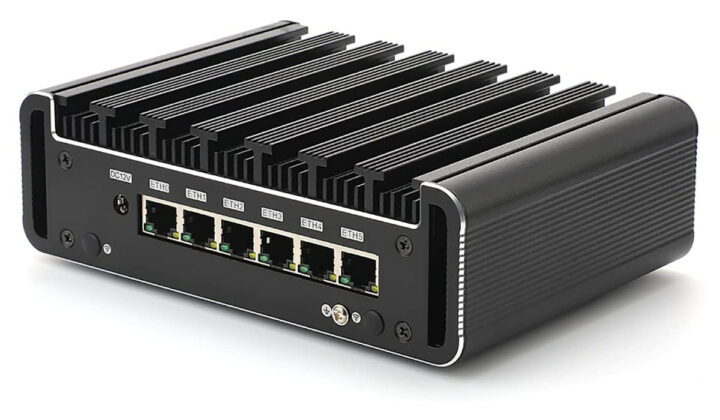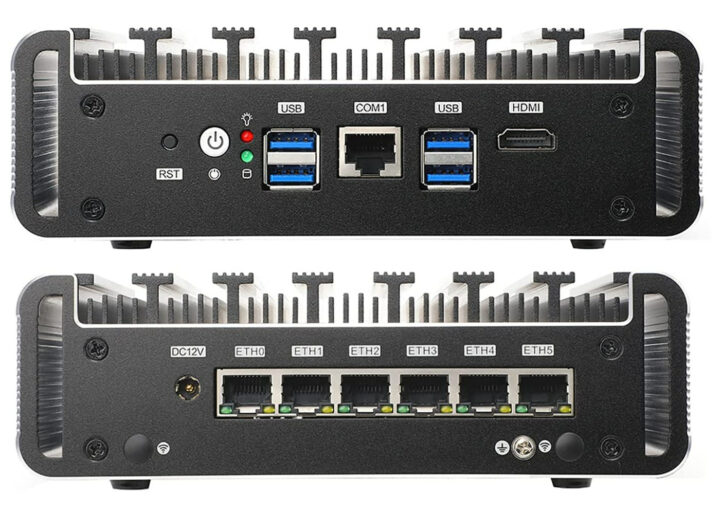If you’re after a network appliance with a recent processor and supporting pfSense you may be in luck. HUNSN RS36a is a mini PC-like device that comes with six Gigabit Ethernet ports, and features an Intel Core i5-1135G7 Tiger Lake processor with support for up to 64GB RAM, 2.5-inch SATA and mSATA SSD that is sold on Amazon for $527.99 and up.
The company says the system is compatible with many FreeBSD-based router systems, Linux distros, and Windows operating systems., and it has already been tested with pfSense, Untangle, OPNsense, and other open-source solutions for firewalls, VPN, network security, and so on.
HUNSN RS36a specifications:
- SoC – Intel Core i5-1135G7 quad-core Tiger lake processor @ 2.50 GHz / 4.2 GHz (Turbo) with 8MB cache, 80EU Intel Iris Xe graphics; 15W TDP
- Syste Memory – 2x SODIMM DDR4-3200, up to 64GB RAM
- Storage – 1x mSATA SSD socket, 1x 2.5-inch SATA HDD or SSD
- Networking
- 6x Gigabit Ethernet ports via Intel i211 10/100/1000M Ethernet controllers
- Optional 4G LTE model with SIM card slot
- Video Output – HDMI port
- USB – 4x USB 3.0 ports
- Serial – COM RJ45 port
- Misc – Reset button, Power button, LEDs
- Power Supply – 12V DC up to 10A
- Dimensions – 178 x 126 x 55mm (Fanless aluminum enclosure)
- Weight – 1.5 kg
- Temperature Range – Operating: 0°C to +70°C; storage: -20°C to +80°C
- Relative Humidity – 10%~90% (non-condensing)
HUNSN RS36a ships with a power adapter, a power cord, and a warranty card. The company also mentions support for auto power on, network wake-up (WoL), system power management, and temperature management. If you’d like to get an idea about Intel Core i5-1135G7 Tiger Lake processor performance check out Beelink GTi 11 mini PC review and benchmarks with Windows 11 and Ubuntu 20.04. You’ll obviously miss firewall/pfSense benchmarks from that review, but that’s a start.
The $527.99 price is for a barebone system without RAM nor storage, and a complete system with 4GB RAM and 32GB storage goes for $573.99, while the highest-end model offered on Amazon is sold for $859.99 with 32GB RAM and a 512GB SSD. [Update: the price starts at around $435 on Aliexpress for the same model, but called Partaker H2. See comments section.]
Via FanlessTech

Jean-Luc started CNX Software in 2010 as a part-time endeavor, before quitting his job as a software engineering manager, and starting to write daily news, and reviews full time later in 2011.
Support CNX Software! Donate via cryptocurrencies, become a Patron on Patreon, or purchase goods on Amazon or Aliexpress






